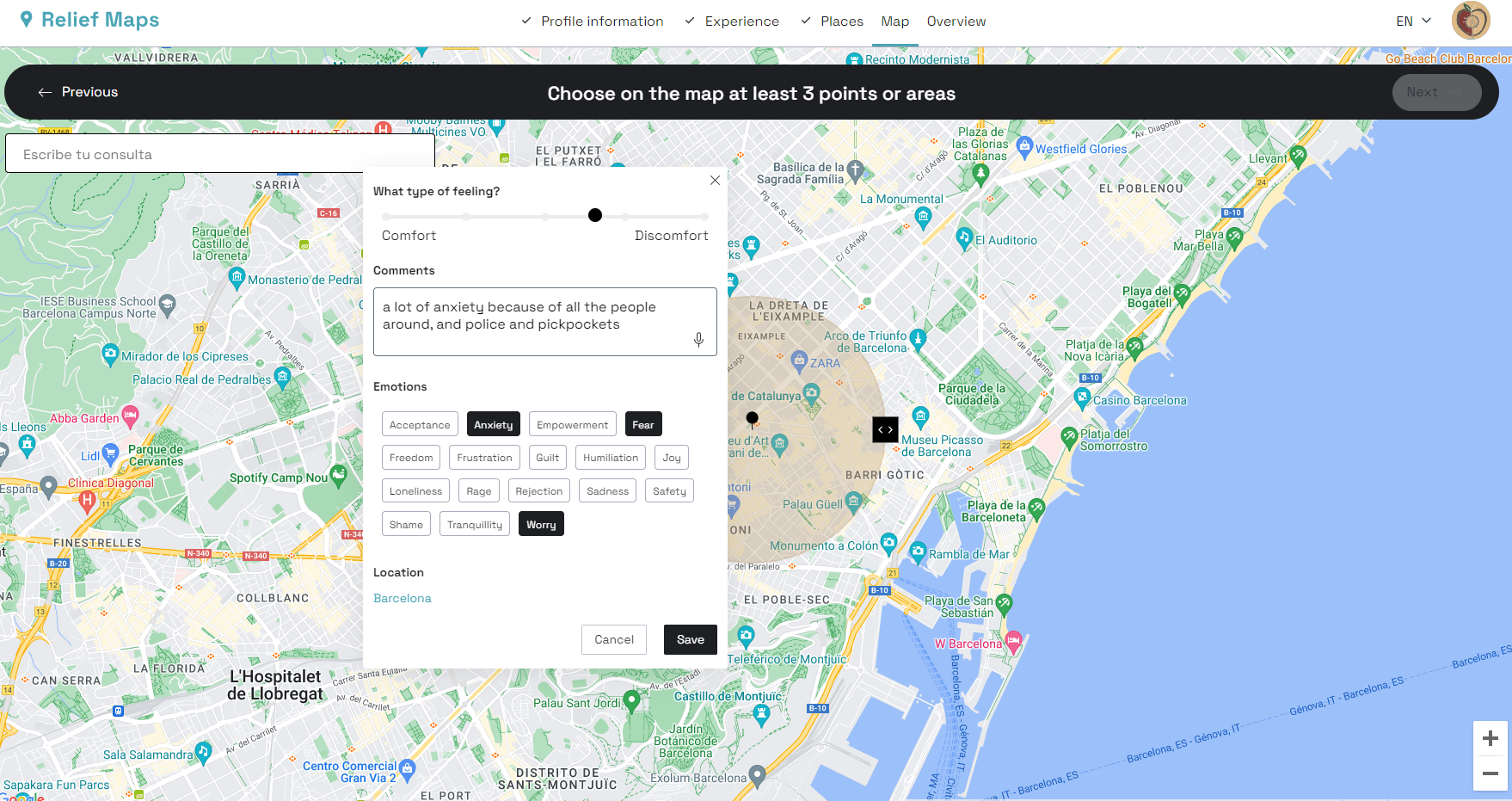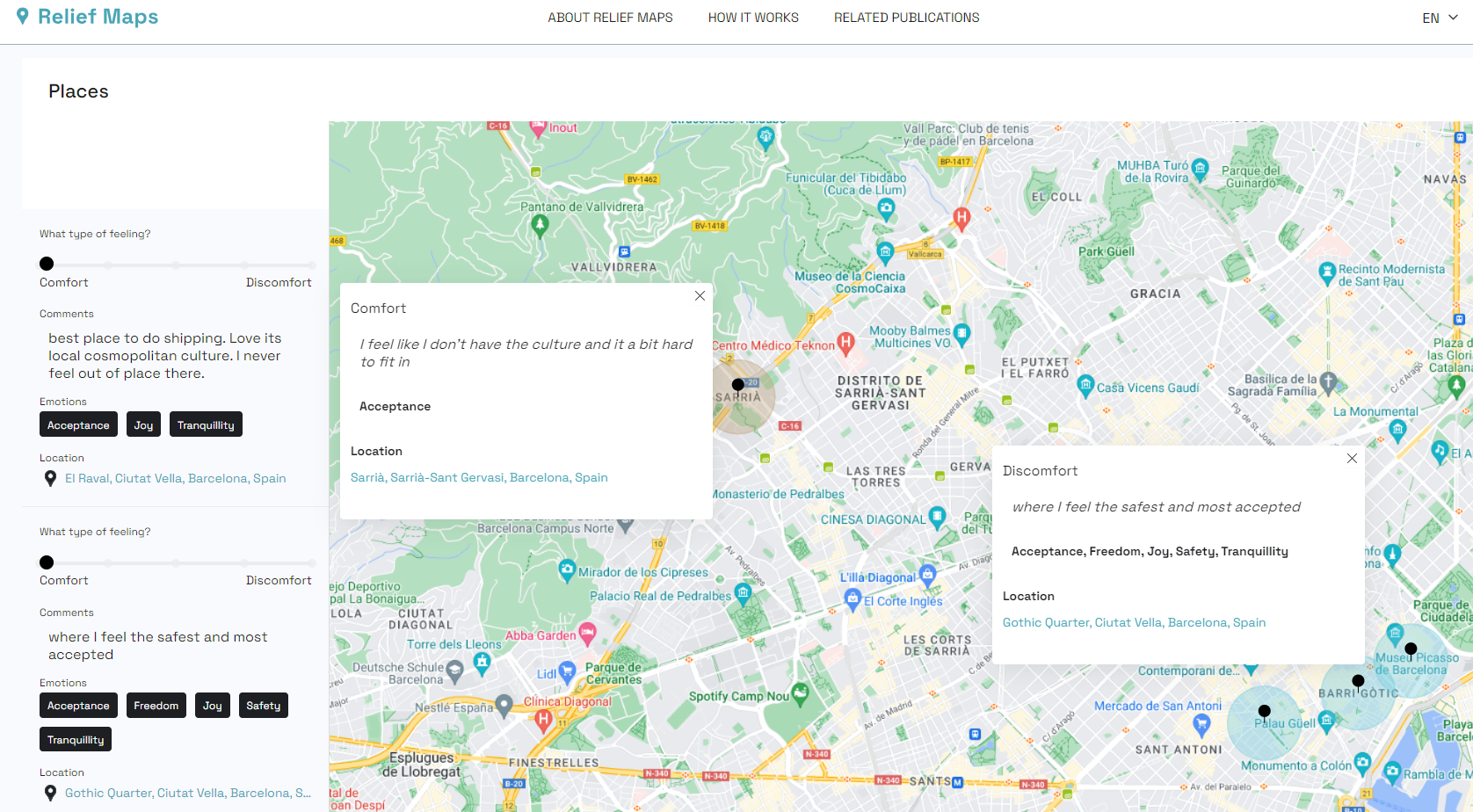The geographical map
Relief Maps have been designed to collect narratives and emotions related to specific points and areas with geographic coordinates. The incorporation of a geographical map to collect georeferenced data has three motivations:
- Firstly, it aims to leverage the power of maps to evoke memories and reflect upon our lived experiences. On the geographical map, participants can indicate whether each selected point represents a place of comfort or discomfort and share the emotions and their experiences associated with that location.
- Secondly, it enables us to consider the complex dimensions of place. A single physical location, for instance, can hold very different meanings for different individuals. Therefore, the aim of this tool is not solely to collect specific coordinates but to gather first-person experiences about places—the emotional map of each person. The collection of places is designed to capture meaningful locations across diverse scales (such as a square, neighborhood, or country).
- Thridly, the collection of georeferenced data might allow more systematic and complex analysis and visualization of spatial patterns of well-being and discomfort due to specific configurations of intersectional inequalities in space. This objective will be accomplished by analyzing the georeferenced data together with the qualitative and quantitative data collected using Relief Maps.

Image 1. Participant view of the map.

Image 2. Example of data collected through the map.
